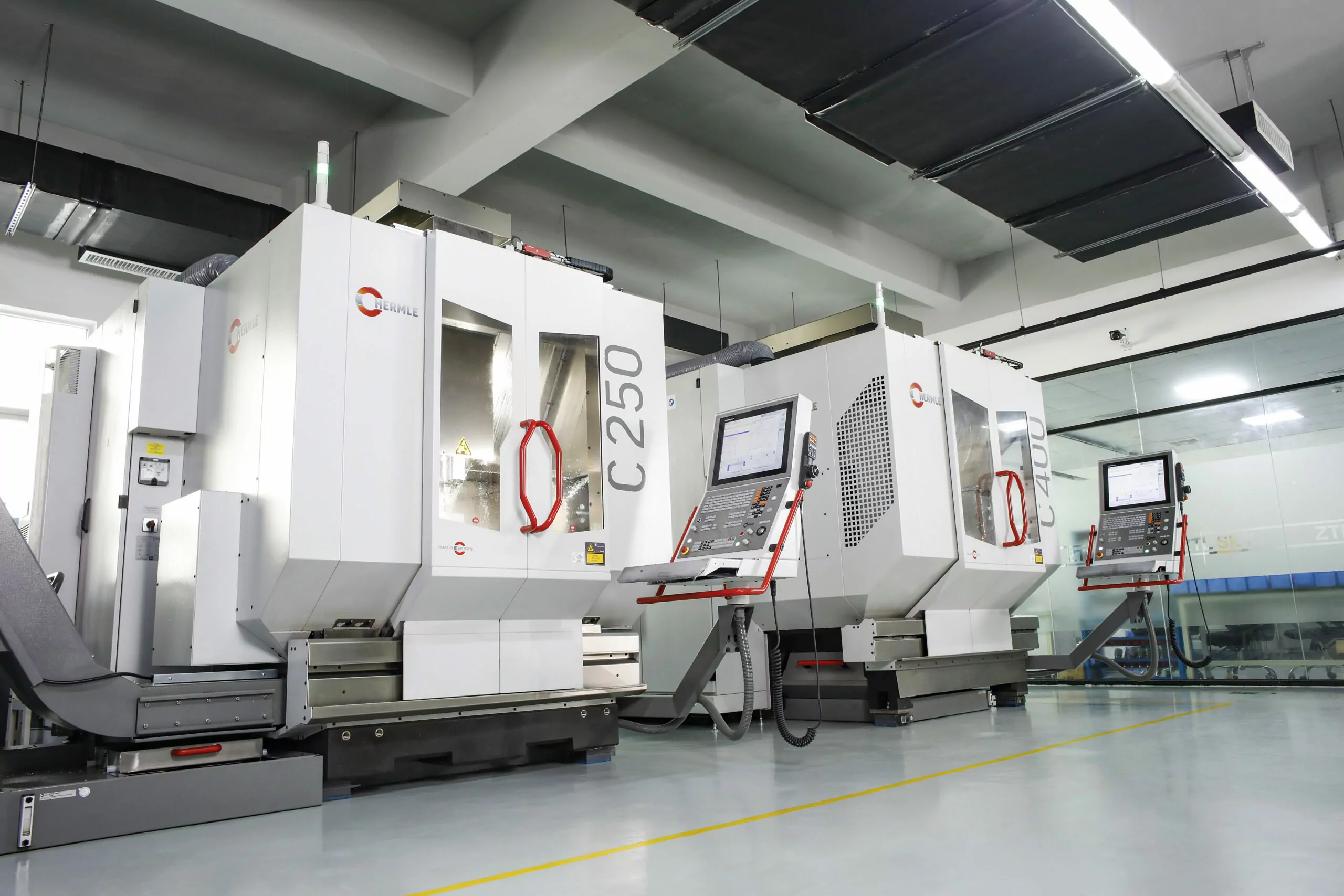The Advantages of Digitalization in CNC Machining Quotes: Enhancing Transparency, Speed, and Accuracy
cnc machining online quote
In this article, we'll explore the different aspects of cnc machining online quote.
In the world of CNC machining, the digitalization of the quoting process has revolutionized the way manufacturers and customers interact. This transformation has brought about numerous benefits, including enhanced transparency, increased speed, and improved accuracy. Let's delve into the advantages of digitalization in CNC machining quotes and explore how it has reshaped the industry.

Transparency in the Quoting Process
One of the key advantages of digitalization in CNC machining quotes is the enhanced transparency it offers. With digital platforms, customers can now access real-time quotes, track the progress of their orders, and gain insights into the manufacturing process. This level of transparency fosters trust and confidence between manufacturers and customers, ultimately leading to stronger partnerships and improved customer satisfaction.
Speed and Efficiency
Another significant advantage of digitalization in CNC machining quotes is the remarkable increase in speed and efficiency. In the past, obtaining a quote for a custom CNC machining project could take days or even weeks. However, with digital platforms, the process has been streamlined, allowing customers to receive accurate quotes within minutes. This accelerated quoting process enables manufacturers to respond to customer inquiries promptly and capitalize on opportunities that may have been missed in the past.
Enhanced Accuracy and Precision
Digitalization in CNC machining quotes has also led to a marked improvement in accuracy and precision. By leveraging advanced software and digital tools, manufacturers can generate quotes with a high degree of accuracy, taking into account intricate design specifications, material requirements, and production timelines. This level of precision not only benefits customers by ensuring that their needs are met, but it also enables manufacturers to optimize their production processes and minimize errors.
Improved Communication and Collaboration
Beyond the tangible benefits of transparency, speed, and accuracy, digitalization in CNC machining quotes has facilitated improved communication and collaboration between manufacturers and customers. Digital platforms provide a seamless channel for exchanging information, sharing design files, and addressing any queries or concerns in real time. This open line of communication fosters a collaborative environment where both parties can work together to achieve the best possible outcomes for the project.
As we can see, the advantages of digitalization in CNC machining quotes are multifaceted and far-reaching. From enhancing transparency and speeding up the quoting process to improving accuracy and fostering collaboration, the impact of digitalization is undeniable. As the industry continues to embrace digital transformation, we can expect to see even more innovations that further elevate the CNC machining experience for manufacturers and customers alike.
References
Transforming Industries through Technology: Digitalization in Die Casting Company Operations
Die Casting Companies
In today's rapidly evolving industrial landscape, the integration of digital technologies has become a pivotal factor in enhancing operational efficiency and driving growth. Die casting companies, in particular, have embraced the concept of digitalization to revolutionize their manufacturing processes and stay ahead in the competitive market.

The Impact of Digitalization on Die Casting Operations
The implementation of digitalization in die casting operations has brought about a paradigm shift in the way these companies function. By leveraging advanced technologies such as IoT (Internet of Things), AI (Artificial Intelligence), and data analytics, die casting companies can now monitor and optimize their production processes in real-time. This level of connectivity and automation has significantly improved productivity, reduced downtime, and minimized the occurrence of defects in the final products.
Enhancing Quality and Precision through Digitalization
One of the key advantages of digitalization in die casting operations is the ability to achieve unparalleled levels of quality and precision. Through the use of advanced simulation software and predictive analytics, die casting companies can simulate and analyze the entire production cycle, identifying potential issues and optimizing the process parameters to ensure the highest quality of output. This level of precision has not only elevated the standard of die-cast components but has also enabled companies to meet the stringent requirements of various industries such as automotive, aerospace, and electronics.
Streamlining Supply Chain Management
Another significant aspect of digitalization in die casting company operations is the transformation of supply chain management. By integrating digital platforms and tools, die casting companies can now seamlessly collaborate with suppliers, monitor inventory levels, and streamline the procurement process. This level of transparency and efficiency in the supply chain has not only reduced lead times but has also minimized the risk of disruptions, ultimately leading to cost savings and improved customer satisfaction.
The Future of Digitalization in Die Casting
As we look towards the future, the potential for digitalization in die casting company operations is boundless. With the emergence of technologies such as 3D printing, advanced robotics, and machine learning, die casting companies are poised to further enhance their capabilities and expand their offerings. The integration of these technologies will not only enable die casting companies to produce more complex and lightweight components but will also open doors to new opportunities in the realm of customization and personalization.
In conclusion, the digitalization of die casting company operations has ushered in a new era of efficiency, quality, and innovation. By embracing the transformative power of digital technologies, die casting companies are not only revolutionizing their own operations but are also contributing to the advancement of industries across the globe.
References
The Influence of Digitalization on Power Station Management and Maintenance
Power Station
In today's rapidly evolving technological landscape, the influence of digitalization on power station management and maintenance cannot be overstated. The integration of digital technologies has revolutionized the way power stations are operated, monitored, and maintained, leading to increased efficiency, cost savings, and improved overall performance.
Enhanced Monitoring and Control Systems
One of the key benefits of digitalization in power station management and maintenance is the development of enhanced monitoring and control systems. Traditional power stations relied on manual monitoring and control processes, which were time-consuming and prone to human error. However, with the advent of digital technologies, power stations can now leverage advanced sensors, data analytics, and real-time monitoring systems to optimize their operations.
These digital systems enable power station operators to collect and analyze vast amounts of data, allowing them to identify potential issues before they escalate into major problems. For example, predictive maintenance algorithms can analyze data from various sensors to detect early signs of equipment failure, enabling proactive maintenance and reducing downtime.
Optimized Asset Management
Digitalization has also revolutionized asset management in power stations. Traditionally, asset management involved manual inspections and maintenance schedules based on predetermined intervals. However, with digitalization, power stations can now implement condition-based maintenance strategies.
By continuously monitoring the condition of assets using sensors and data analytics, power stations can optimize maintenance schedules and reduce unnecessary downtime. For example, if a sensor detects a decrease in the efficiency of a turbine, maintenance can be scheduled promptly to prevent further deterioration and potential failure.
Improved Energy Efficiency
The influence of digitalization on power station management and maintenance extends to energy efficiency. Digital technologies enable power stations to optimize their energy generation and consumption, leading to significant cost savings and reduced environmental impact.
Advanced data analytics can analyze real-time data from power stations, identifying areas where energy consumption can be optimized. For example, by analyzing historical data and weather patterns, power stations can adjust their energy generation to match demand, reducing wastage and improving overall efficiency.
Enhanced Safety and Security
Digitalization has also had a profound impact on the safety and security of power stations. With the integration of digital technologies, power stations can implement advanced safety systems and cybersecurity measures to protect critical infrastructure.
For example, digital systems can monitor various parameters such as temperature, pressure, and vibration levels in real-time, alerting operators to potential safety hazards. Additionally, cybersecurity measures can safeguard power stations from cyber threats, ensuring the uninterrupted operation of critical infrastructure.
In conclusion, the influence of digitalization on power station management and maintenance has transformed the industry. Enhanced monitoring and control systems, optimized asset management, improved energy efficiency, and enhanced safety and security are just a few of the benefits that digitalization brings to power stations. As technology continues to advance, we can expect further innovations and improvements in the field, leading to even more efficient and sustainable power generation.
References
References:
Characteristics Of Digitalizational Crowdfunding

The emergence of smartphones, the development of the Internet technologies, the popularization of social networks, and as a result, the habit of using these services at any time provided the opportunity for the creation of e-commerce and crowdfunding platforms. Customers want to use a service, to transfer money, to pay, to receive the necessary information, to leave suggestions and claims quickly. A network structure, a digital footprint, the death of distance, and algorithmification has become a part of the rise of digital banking.
These four concepts correlate and interrelate, building the network structure in e-commerce. It allows closing the distance between clients with the availability of a mobile bank 24 hours a day, 7 days a week. This is possible due to the data base collecting information about all of the clients from networks and corporate sites. It refers to the digital footprint as well. For example, search engines and bank sites memorize all previous choices of a user or services he or she employed while Facebook users newsfeeds or his/her discussion posts and it depends on the news that people read before. Algorithmification allows one to automate classical banking processes, to expand a set of resources, and to go beyond the boundaries of the presentation of a traditional bank. A vivid example of such digitalization is the concept of an online marketplace and white label services. Finally, the emergence of e-commerce created the preconditions for crowdfunding, labor migration, and e-government, with an opportunity to pay for services transparently.
These effects became the core of digitalization and entailed a deep layer of social changes, particularly in banking processes, the operation of personnel, and the application of technologies. Digitalization is a constant improvement and implementation of work with a client through all digital channels at any moment and in any environment, depending on the understanding of the future, the development strategy, and the availability of technologies, the level of customer service, and as a consequence, the current profitability of banks.





